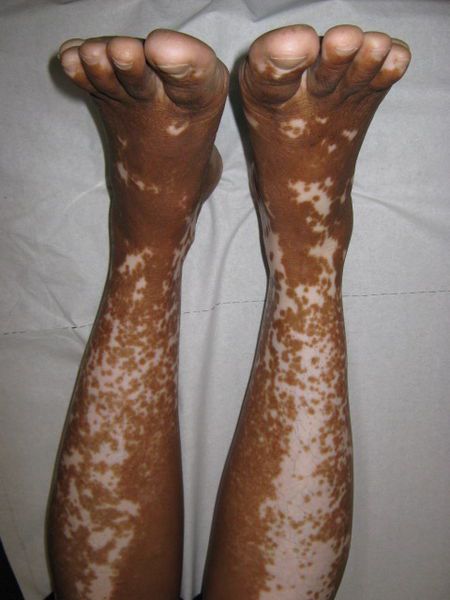-
 Ferromagnetic
Ferromagnetic
-
 Firmicute
Firmicute
-
 Basis weight or grammage
Basis weight or grammage
-
 Artificial heart
Artificial heart
-
 Hypothalamic paraventricular nucleus
Hypothalamic paraventricular nucleus
-
 Disruptive colouration
Disruptive colouration
-
 Echocardiography
Echocardiography
-
 Selectron
Selectron
-
 Aragonite
Aragonite
-
 Supination
Supination
-
 Ligand
Ligand
-
 Stenosis
Stenosis
-
 HD-DVD
HD-DVD
-
 Marsis radar
Marsis radar
-
 Main cryogenic stage
Main cryogenic stage
-
 Temperature
Temperature
-
 Long distance
Long distance
-
 Lithology
Lithology
-
 Autoclave
Autoclave
-
 Panspermia
Panspermia
-
 Barbule
Barbule
-
 Phoresy
Phoresy
-
 Io
Io
-
 Corium
Corium
-
 Banya
Banya
-
 Monsoon
Monsoon
-
 Aldohexose
Aldohexose
-
 Sympatry
Sympatry
-
 Slurry pipeline
Slurry pipeline
-
 Kliper
Kliper
Vitiligo
Vitiligo is an epidermal condition in which depigmented spots appear and develop on the surface of the skin.
It affects between 1 and 3% of people and appears to equally affect all ethnic groups, men and women. The mechanism responsible for it is still not known. In most cases the disease develops before the age of 20 years old.
Causes of vitiligo
The disease targets the melanocytes, the cells responsible for producing melanin which gives the skin its colour. Disappearance of these cells leads to depigmentation of the skin. Several genes are suspected to be involved in development of its symptoms and other theories have been advanced.
- Auto-immune hypothesis: the production of abnormal antibodies which target and remove melanocytes. This hypothesis is strengthened by the fact that people who suffer from vitiligo often also suffer from autoimmune diseases.
- Accumulation of free radicals: some studies have shown accumulation of free radicals in people suffering from vitiligo. These aggressive compounds are believed to destroy the melanocytes.
- Neuronal hypothesis: researchers have noticed that the expansion of the depigmented areas correspond to an area innervated by a nerve. They then came to the belief that the nerve ending could release substances which were toxic to melanocytes.
Extreme stress can also cause vitiligo.
Transmission of vitiligo
Vitiligo is not contagious but as it appears to have genetic origin, it is very probably transmitted from parents to children. Vitiligo is not hazardous to health.
Treatments for vitiligo
Several treatments are now offered to try to get rid of it although none is truly effective. Some, nevertheless, can repigment some of the affected areas but always only partially. The side effects are sometimes more troublesome than the condition itself.
Of these treatments, ultraviolet light irradiation is often used. Corticosteroids are also used. Vitiligo can also sometimes be triggered by stress. In this case patients must receive psychological treatment. Finally, surgery can be considered by injecting melanocytes into the depigmented areas.
Skin grafts are even performed in some cases.
 The discolouration of skin which causes vitiligo may affect more or less widespread areas of the body. © Grook Da Oger, Wikipedia
The discolouration of skin which causes vitiligo may affect more or less widespread areas of the body. © Grook Da Oger, Wikipedia
Latest
Fill out my online form.



